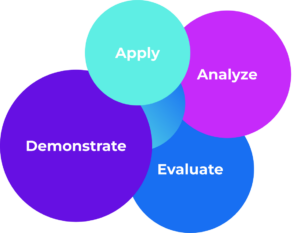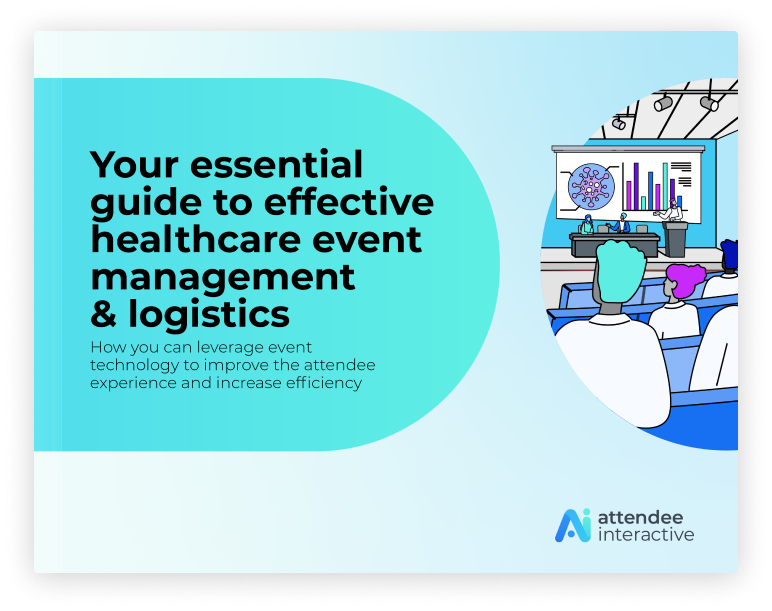Continuing medical education (CME) plays a crucial role in the ongoing professional development of healthcare practitioners. It ensures that medical professionals stay updated with the latest advancements, evidence-based practices, and guidelines,
ultimately improving patient outcomes and enhancing healthcare systems.
One of the foundational elements of an effective CME program is the clear definition of learning objectives. Learning objectives serve as a roadmap for educators and participants, guiding content development and facilitating measurable outcomes.
This article will delve into the significance of CME learning objectives, presenting the best practices for developing them, and offering ways to improve participant engagement.
Here’s how to define effective CME Learning Objectives.
Why is it important to define effective CME Learning Objectives?
Clear and well-defined CME learning objectives are essential for several reasons. They provide a sense of direction for CME providers and educators, helping them design meaningful educational experiences. When CME learning objectives are explicit, educators can align content and activities with the desired outcomes, making the learning process more focused and effective.
CME learning objectives also measure success, allowing participants to gauge their progress and achievement throughout the program. Participants are more likely to remain motivated and engaged when they know what they are expected to achieve.
The Accreditation Council for Continuing Medical Education (ACCME) recognizes three areas of desirable change, including:
- Competence: The ACCME defines competence as knowledge put into action. CME learning objectives should help participants gain knowledge, skills, and abilities to use in their professional practice.
- Performance: The ACCME defines performance as competence put into practice. Performance-based CME learning objectives should enable participants to apply the knowledge and skills they acquired from CME classes and optimize their clinical, organizational, or system outcomes to improve patient care.
- Patient Outcomes: This involves measurable changes in patient outcomes due to the CME activity. CME learning objectives should be rooted in evidence-based practices that directly affect patient care and safety.
Key elements to defining effective CME learning objectives
To create effective CME learning objectives, CME educators must consider several key elements. These elements ensure that the objectives are clear, measurable, achievable, relevant, and time bound.
- Specificity: Clear and specific objectives are crucial for directing participants toward their intended learning outcomes. Objectives should articulate precisely what participants are expected to learn or achieve. Vague or ambiguous goals can lead to confusion and make it challenging for learners to focus on the most critical areas of improvement.
- Measurability: Measurable targets allow educators to assess the success of the CME program effectively. They must frame objectives to allow for quantitative or observable assessments of participants’ progress. This measurement helps gauge the knowledge or skills gained during the learning process and assess the extent to which participants have met the desired outcomes.
- Achievability: Objectives should balance being challenging enough to promote growth and attainable enough to avoid overwhelming learners. Unrealistically difficult or overly complex objectives may frustrate and demotivate participants, hindering their ability to achieve the desired outcomes.
- Relevance: Learning objectives must directly align with the participants’ professional needs and address their knowledge gaps. Learners who perceive the content as relevant to their daily practice are more motivated to actively engage with the material and apply it in real-world scenarios.
- Time-bound Nature: Setting a timeframe for achieving the objectives gives participants a sense of direction and urgency. It encourages learners to stay focused and complete the CME program within a reasonable period. Time-bound goals also allow educators to plan and structure CME activities effectively.
Best practices for defining effective CME learning objectives
Crafting clear and actionable CME learning objectives can be achieved through the following best practices:
- Use Action Verbs: Begin each learning objective with an action verb describing what participants must do. Verbs like “analyze,” “demonstrate,” “evaluate,” and “apply” emphasize the desired cognitive level and help in constructing measurable outcomes.
- Determine Measurable Outcomes: Structure learning objectives in a way that allows for assessment. Participants should be able to demonstrate their achievement through assessments or evaluations.
- Consider Bloom’s Taxonomy: Bloom’s Taxonomy provides a hierarchy of cognitive levels, ranging from lower-order thinking (e.g., remembering and understanding) to higher-order thinking (e.g., analyzing and creating). Aim to develop objectives that encompass different levels of cognitive skills, promoting deeper learning.
- Be Concise: Keep the learning objectives concise and to the point. Avoid unnecessary jargon or ambiguity that may confuse participants.
Strategies to enhance participant engagement
Engagement is a critical factor in supporting successful learning experiences. By incorporating interactive learning techniques, CME providers can improve participant motivation, knowledge retention, and application of newly acquired skills. Some effective strategies include:
- Case Studies and Scenarios: Presenting real-life case studies or scenarios allows participants to apply their knowledge in practical situations, promoting critical thinking and problem-solving skills.
- Group Discussions and Debates: Encourage peer-to-peer interaction through group discussions and debates, fostering collaboration and diverse perspectives.
- Gamification: Gamified elements, such as quizzes, challenges, and rewards, add an element of fun and competition, making the learning process more energizing and enjoyable.
- Simulations and Virtual Reality: Leveraging virtual reality and simulations provides a safe environment for participants to practice complex procedures and decision-making.
Measuring the impact of effective CME learning objectives
Evaluating the effectiveness of CME learning objectives is essential to meet educational goals and identify improvement areas. Several methods can be employed to assess the impact of CME learning objectives:
- Pre- and Post-Assessments: Conducting assessments before and after the CME program allows educators to measure the participants’ knowledge growth and skill improvement. Awarding CME certificates or diplomas can motivate learners and demonstrate their achievements.
- Surveys and Feedback Mechanisms: Gathering participant feedback through surveys and other feedback mechanisms helps you understand their perceptions of the program’s effectiveness and identify areas that need enhancement.
- Longitudinal Studies: In some cases, longitudinal studies are beneficial in assessing the long-term impact of CME programs on participant performance and patient outcomes.
- Application and Practice Analysis: Observing participants in their professional settings can provide insights into how effectively they apply the knowledge and skills gained from the CME program.
Aligning objectives with learner needs
To create relevant and impactful CME learning objectives, it is crucial to align them with the specific needs of the participants. Providers must tailor CME education to address participants’ knowledge gaps and skill deficits. By meeting their needs, CME providers can ensure that learners remain motivated and engaged during CME training, enabling them to apply their new skills in practice effectively.
CME providers can align learning objectives with learner needs through:
- Needs Assessments: Conduct comprehensive needs assessments to identify knowledge gaps and learning priorities among the target audience.
- Learner Feedback: Gather feedback from participants on their learning preferences and areas they wish to improve upon.
- Customization: Tailor learning objectives to accommodate the participants’ diverse backgrounds, skill levels, and practice contexts.
Creating Objectives for Different Learning Formats
CME programs can be delivered in various formats, including live conferences, online courses, workshops, and blended learning. To ensure the effectiveness of learning objectives, every CME presentation should be adapted to suit the specific characteristics of each format.
- Live Conferences: Learning objectives for live conferences should consider the limited time available and prioritize key takeaways and skills that learners can immediately apply in their practice.
- Online CME Courses: An online CME course can leverage multimedia, interactive quizzes, and discussion forums to enhance participant engagement and knowledge retention.
- Workshops: Workshops offer an opportunity for hands-on learning, making it essential to craft objectives that emphasize practical application and skill development.
- Blended Learning: Blending various formats allows for a more comprehensive learning experience. Design objectives to complement each structure and reinforce critical concepts.
Leveraging technology to enhance CME objectives
Technology has revolutionized the field of education, and CME is no exception. Integrating technology into CME programs can enhance learning objectives and overall participant experience in several ways:
- Interactive Learning Platforms: Utilize interactive online platforms that offer multimedia content, quizzes, and simulations to engage participants actively.
- Personalized Learning Pathways: AI-driven algorithms can create customized learning paths for each participant based on their learning preferences and progress.
- Virtual Reality (VR): VR simulations can provide immersive experiences for participants to practice complex medical procedures in a risk-free environment.
- Gamification: Gamified elements, such as points, badges, and leaderboards, can motivate participants to complete modules and achieve learning objectives.
Define cutting-edge CME objectives with Attendee Interactive 
CME learning objectives form the backbone of effective educational programs, guiding content development and facilitating measurable outcomes. CME providers can optimize participant engagement and knowledge retention by adhering to essential elements for defining clear objectives and incorporating best practices for crafting actionable goals.
Aligning objectives with learner needs ensures that the CME program addresses specific knowledge gaps and professional requirements. Additionally, leveraging technology in CME programs offers exciting opportunities to enhance learning objectives and create more immersive and interactive educational experiences.
By considering these considerations for creating effective CME learning objectives, providers can ensure the success of their programs, delivering impactful and transformative educational experiences to medical professionals worldwide.
Attendee Interactive makes it possible to manage every detail of your continuing education program in one place. Learn how Using Accreditation Management Software for CME Issuance can help your team exceed your goals.
Contact us today to learn more about our proven solutions.




